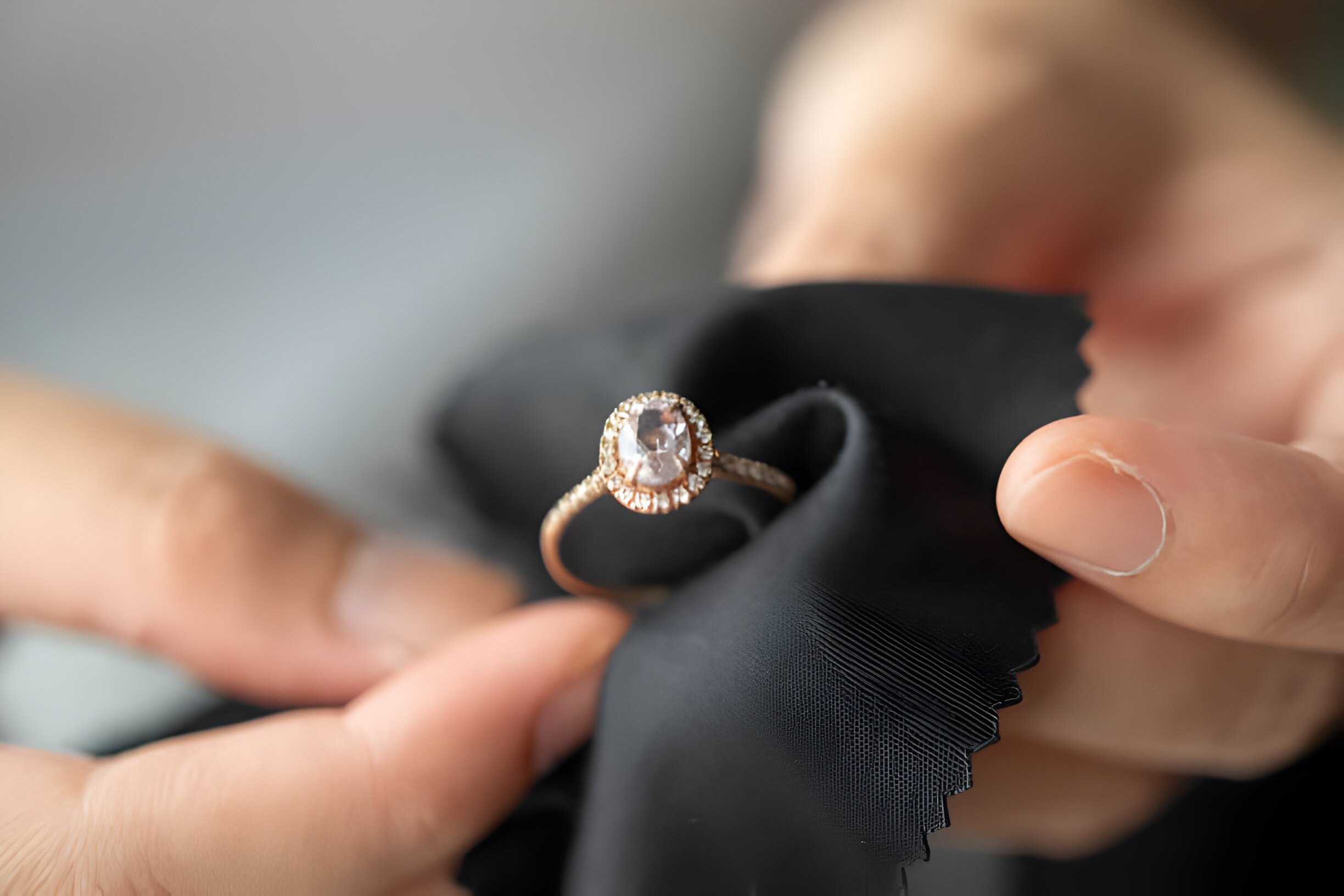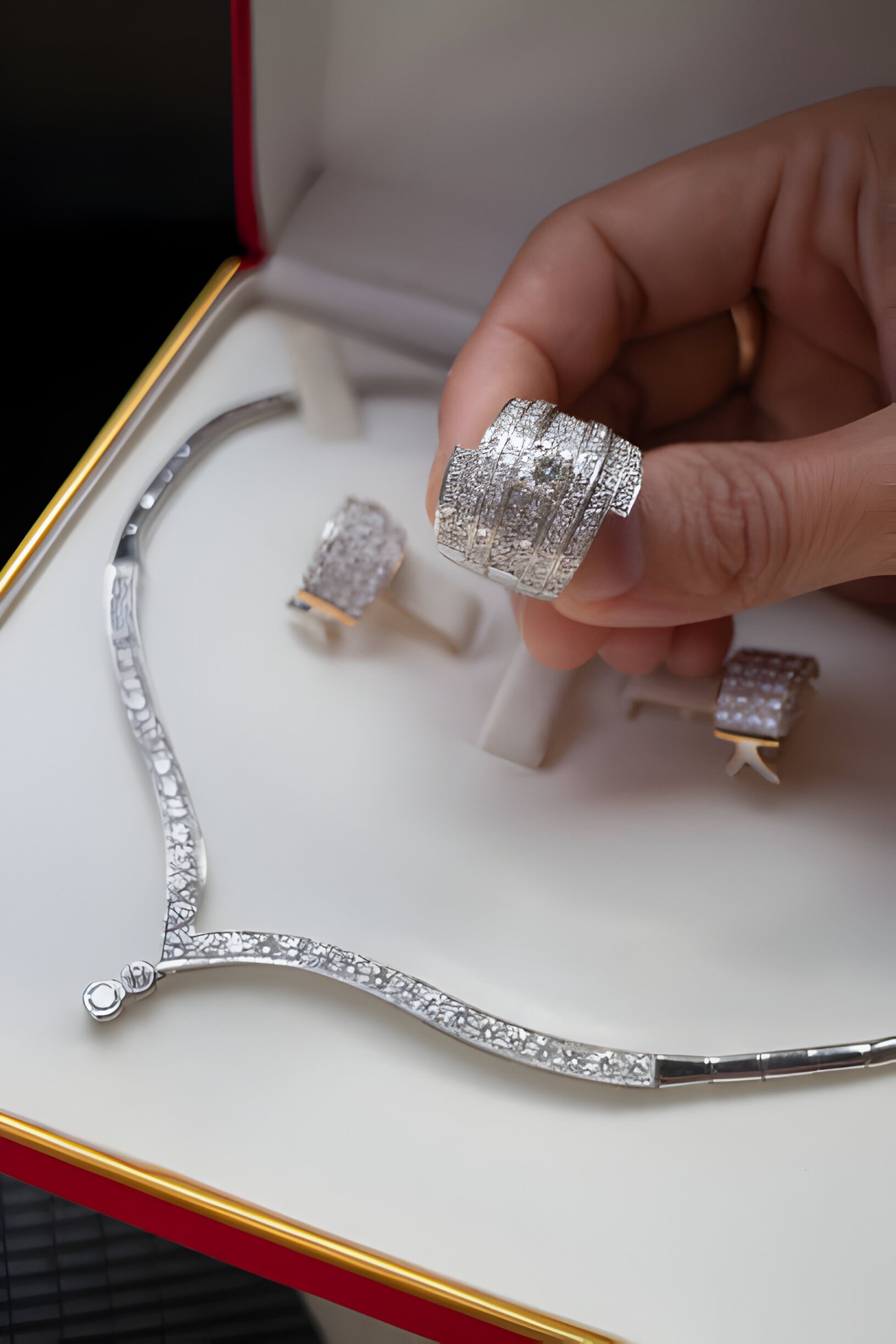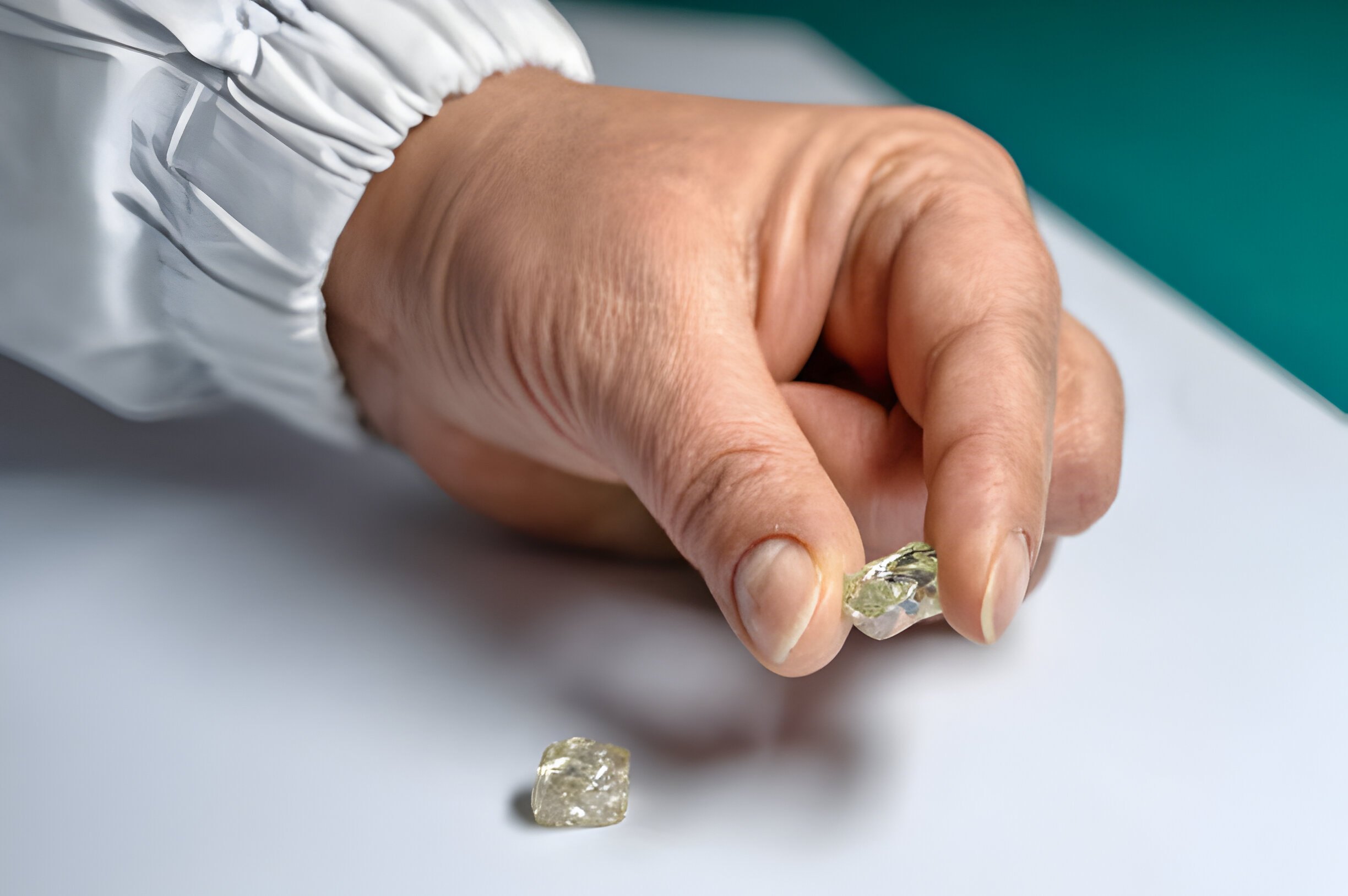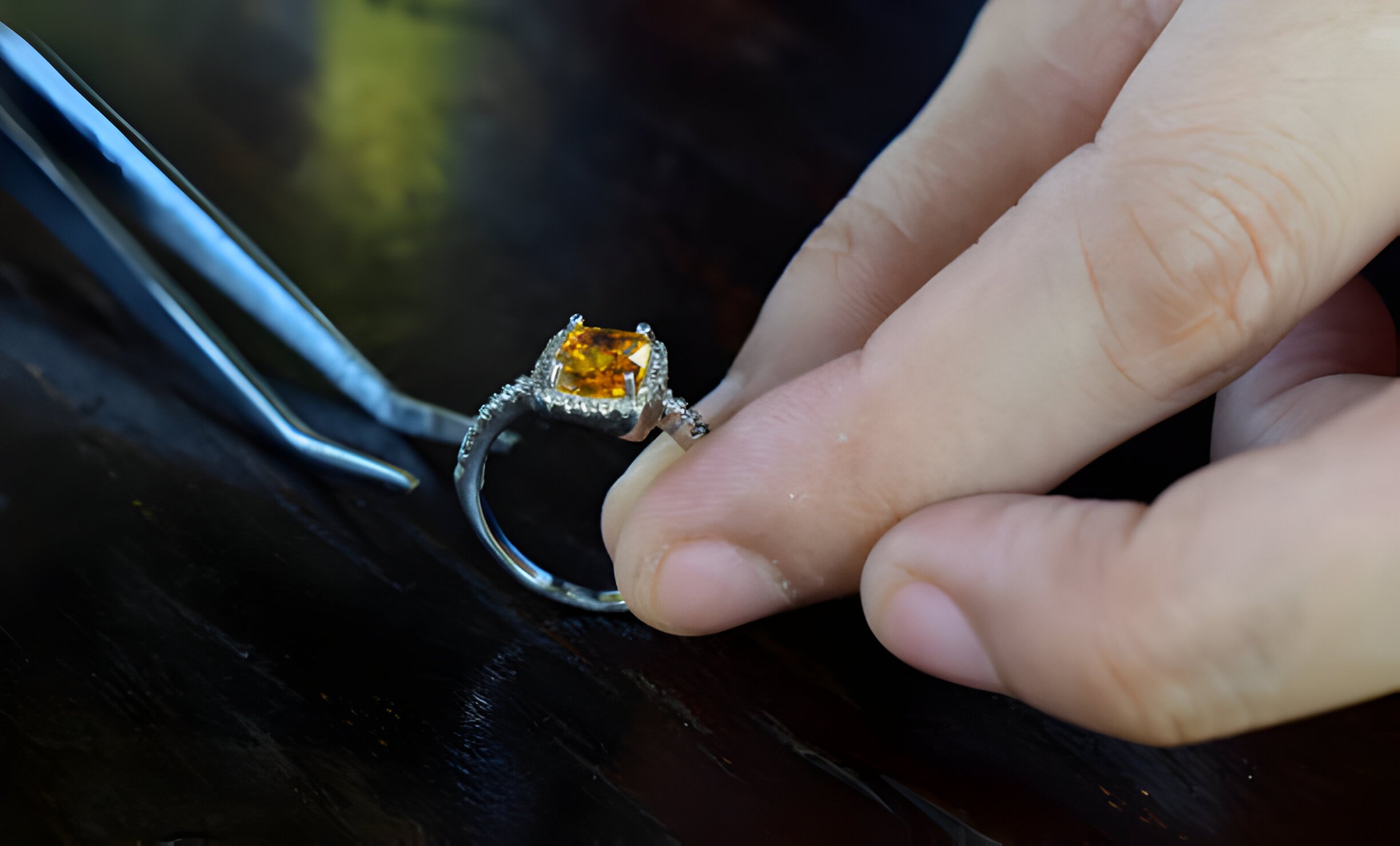Education
Jewelery Care
Jewelry Care Products
Maintaining the brilliance of your diamond engagement ring requires regular attention. Make it a daily routine to remove your ring and examine it for any signs of loose or bent prongs. To ensure its longevity, schedule a professional inspection every six months to a year for tightening and cleaning. Entrust your ring to a skilled jeweler who can polish it to perfection, restoring its original shine.
Jewelry Care


Jewelry Care Products
Maintaining the brilliance of your diamond engagement ring requires regular attention. Make it a daily routine to remove your ring and examine it for any signs of loose or bent prongs. To ensure its longevity, schedule a professional inspection every six months to a year for tightening and cleaning. Entrust your ring to a skilled jeweler who can polish it to perfection, restoring its original shine.
Jewelery Care
Jewelry Care Products
Maintaining the brilliance of your diamond engagement ring requires regular attention. Make it a daily routine to remove your ring and examine it for any signs of loose or bent prongs. To ensure its longevity, schedule a professional inspection every six months to a year for tightening and cleaning. Entrust your ring to a skilled jeweler who can polish it to perfection, restoring its original shine.
Organized Storage
At-home Maintenance

Organized Storage
Diamonds may be durable, but they’re not immune to scratches, especially from other diamonds. Keep your jewelry safe by storing each piece separately, ideally in a fabric-lined case or box with dividers. This simple precaution helps preserve the pristine condition of your precious gems.
At-home Maintenance
Elevate your jewelry care routine with our exclusive line of luxury care products.

Organized Storage
Diamonds may be durable, but they’re not immune to scratches, especially from other diamonds. Keep your jewelry safe by storing each piece separately, ideally in a fabric-lined case or box with dividers. This simple precaution helps preserve the pristine condition of your precious gems.
Understanding Diamond Clarity
In the realm of diamonds, clarity is akin to a fingerprint, unique to each gem. These distinct characteristics fall into two categories: inclusions and blemishes. Inclusions are internal or surface-reaching flaws, while blemishes are confined to the diamond’s surface. When light enters a diamond, any interruption in its flow, like an inclusion, can cause a loss of reflected light, diminishing the diamond’s beauty.
Understanding Diamond Clarity
In the realm of diamonds, clarity is akin to a fingerprint, unique to each gem. These distinct characteristics fall into two categories: inclusions and blemishes. Inclusions are internal or surface-reaching flaws, while blemishes are confined to the diamond’s surface. When light enters a diamond, any interruption in its flow, like an inclusion, can cause a loss of reflected light, diminishing the diamond’s beauty.

Selecting the Ideal Diamond
éthique recommends opting for a diamond that is “eye clean,” meaning no internal flaws are visible without aid. While the difference between an SI1 and an SI2 grade may not be discernible to the naked eye, factors such as the number, size, brightness, nature, and position of inclusions in an SI2 diamond must be considered to ensure it meets the standard of being eye clean. Some inclusions may be obscured by prongs when mounted, minimizing their impact on the diamond’s appearance. However, inclusions positioned prominently within the diamond can affect the dispersion of light, potentially reducing its brilliance.


Ensuring Quality
éthique’s diamond consultants can meticulously inspect an SI2 graded diamond to verify its eye cleanliness before purchase. For assistance, reach out to us via email at service@ethique.com
Understanding the Impact of Diamond Cut
The cut of a diamond holds paramount importance among the four Cs, influencing its brilliance, fire, and scintillation.
Typically, diamonds undergo a “spread” cutting technique to preserve maximum weight from the original rough diamond. While this method yields a heavier diamond, it often compromises the stone’s potential for fire and brilliance.
The width and depth of a diamond play a pivotal role in determining how light traverses within the stone and ultimately exits in the form of brilliance.

Understanding Of Diamond Color

Understanding Fluorescence in Diamonds
Fluorescence in diamonds does not directly influence their color but rather pertains to their capacity to fluoresce when exposed to ultraviolet (UV) light. While sunlight emits some UV light, it typically isn’t sufficient to reveal fluorescence. Under UV light, many diamonds emit a distinct blue glow, although fluorescence can manifest in various hues, with blue being the most prevalent. The intensity of a diamond’s fluorescence is categorized as None, Faint, Medium, Strong, or Very Strong. Despite being a measurable characteristic, fluorescence seldom affects diamond selection and is usually imperceptible to the naked eye.
The impact of fluorescence on diamond pricing hinges on its visibility. Faint fluorescence has minimal impact on diamonds of any color and thus doesn’t influence their value. However, for higher color grade diamonds (D to G), strong fluorescence may impart a milky white appearance, significantly diminishing their worth. Conversely, fluorescence often enhances the value of diamonds with slight color tints, such as those graded I-color and below, as it can imbue them with a whiter, more luminous appearance.


Understanding Fluorescence in Diamonds
Fluorescence in diamonds does not directly influence their color but rather pertains to their capacity to fluoresce when exposed to ultraviolet (UV) light. While sunlight emits some UV light, it typically isn’t sufficient to reveal fluorescence. Under UV light, many diamonds emit a distinct blue glow, although fluorescence can manifest in various hues, with blue being the most prevalent. The intensity of a diamond’s fluorescence is categorized as None, Faint, Medium, Strong, or Very Strong. Despite being a measurable characteristic, fluorescence seldom affects diamond selection and is usually imperceptible to the naked eye.
The impact of fluorescence on diamond pricing hinges on its visibility. Faint fluorescence has minimal impact on diamonds of any color and thus doesn’t influence their value. However, for higher color grade diamonds (D to G), strong fluorescence may impart a milky white appearance, significantly diminishing their worth. Conversely, fluorescence often enhances the value of diamonds with slight color tints, such as those graded I-color and below, as it can imbue them with a whiter, more luminous appearance.
Select Thoughtfully
Diamond fluorescence may seem intricate, yet within the realm of diamonds, it follows a rather simple quality assessment procedure. Ultimately, beauty lies in the eye of the beholder, but it’s crucial to recognize that a diamond with high fluorescence isn’t inherently superior!


Understanding the Formation of Naturally Colored Diamonds
In the realm of diamonds, the allure of vibrant hues goes beyond the traditional colorless stones. Understanding the conditions necessary for the creation of these fancy gemstones sheds light on their rarity and desirability.
Formation Process
Diamonds, formed from heated and compressed carbon pushed towards the Earth's surface, are typically colorless. However, it's the impurities within these stones that catalyze coloration. Carbon seldom exists in isolation, often accompanied by other elements that subtly tinge the final product, enhancing the appeal of colorless diamonds.
Impact of Elements
Rarer still are diamonds displaying intense colors, indicative of significant environmental elements. Elements like boron produce coveted blue hues, while nitrogen imparts more common yellows and browns. Radiation can yield a distinctive green hue, while unique stresses trapping electrons within the stone result in pink or reddish tones.
Flaws and Refraction
Flaws within the diamond can accentuate or even instigate coloration through refracted light. Consequently, a colored stone with a flaw may be more desirable, as it can intensify the color, elevating it to the status of a "fancy colored diamond" and exponentially increasing its value.
Value Determination
While it may seem paradoxical, impurities and flaws can augment a diamond's worth, provided they meet the criteria for fancy color status. Stones with pale or unsaturated colors hold lesser value, underscoring the importance of rarity standards in ensuring the investment's value matches its desirability.
Spread Cutting Technique
common approach in diamond cutting involves "spreading" the stone to preserve maximum weight from the original rough. While this method yields a heavier diamond, it often compromises the potential for fire and brilliance. The width and depth significantly influence how light traverses within and exits the diamond, determining its brilliance.

Importance of Diamond Cut
The cut of a diamond stands as the paramount factor among the four Cs. Understanding how a diamond’s proportions and their interplay affect its brilliance, fire, and scintillation is crucial.
Spread Cutting Technique
common approach in diamond cutting involves “spreading” the stone to preserve maximum weight from the original rough. While this method yields a heavier diamond, it often compromises the potential for fire and brilliance. The width and depth significantly influence how light traverses within and exits the diamond, determining its brilliance.

Key Measurements for Cut Quality
Two vital metrics in evaluating a diamond’s cut are its depth percentage (the ratio of height to width) and its table percentage (the ratio of the top facet’s diameter to the stone’s average width). These measurements, outlined in the GIA or AGSL Diamond Grading Report accompanying each ethique loose diamond, are crucial indicators of cut quality. However, experts hold diverse perspectives on the optimal table size and depth alone, as these metrics don’t provide a comprehensive assessment of a diamond’s cut. Factors like crown angle, girdle thickness, culet size, polish, and symmetry all contribute to the overall judgment of a diamond’s cut quality.
Diamond Polish and Symmetry Grading
When evaluating diamonds, both polish and symmetry play crucial roles in determining their overall appearance.
Polish
This aspect refers to the quality of the diamond's surface, encompassing features such as nicks, polish lines, and abrasions.
Symmetry
Symmetry, on the other hand, pertains to the precision of the shape and alignment of the facets.

GIA (Gemological Institute of America)
Grades polish and symmetry as Excellent (EX), Very Good (VG), or Good (G).
AGSL (American Gem Society Laboratories)
Utilizes grades Ideal (ID), Excellent (EX), Very Good (VG), and Good (G) for polish and symmetry assessments.
éthique's Standards
At éthique, we uphold high standards for diamond quality. We do not offer diamonds with polish and symmetry grades of Fair (F) or Poor (P).








